|
I
thought this was a pretty reasonable stab at getting Bond back
to the Fleming character and flavour. Daniel Craig certainly
brings something to the table, leaving you feeling that he's
capable and dangerous in a modern world, but that's the real
problem. Bond is an agent from a bygone age, who is being
dragged into the modern world with gadgets (adverts) that did
not exist when the franchise was created. That said, I'd rather
have Bond alive and kicking with the backing from sponsors to
keep going.
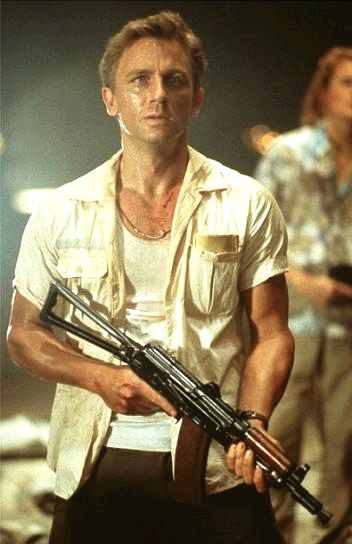
Daniel
Craig is the new James Bond for 2006
Casino Royale is the twenty-first film in the James Bond film series and the first to star Daniel Craig as fictional MI6 agent James Bond. Directed by Martin Campbell and written by Neal Purvis, Robert Wade and Paul Haggis, the film marks the third screen adaptation of Ian Fleming's 1953 novel of the same name, which was previously produced as a 1954 television episode and a 1967 satirical film. Casino Royale is set at the beginning of Bond's career as Agent 007, just as he is earning his licence to kill. After preventing a terrorist attack at Miami International Airport, Bond falls for Vesper Lynd, the treasury employee assigned to provide the money he needs to bankrupt terrorist financier Le Chiffre by beating him in a high-stakes poker game. The story arc continues in the following Bond film, Quantum of Solace (2008).
Casino Royale reboots the franchise, establishing a new timeline and narrative framework not meant to precede or succeed any previous Bond
film, although elements of the plot do run into the subsequent film, Quantum of Solace. This allowed the film to show a less experienced and more vulnerable
Bond and for the first time in the series the character of Miss Moneypenny does not appear. Casting the film involved a widespread search for a new actor to portray James Bond, and significant controversy surrounded Craig when he was selected to succeed Pierce Brosnan in October 2005. Location filming took place in the Czech Republic, The Bahamas, Italy and the United Kingdom with interior sets built at Pinewood Studios. Despite setting a part of the storyline in Montenegro, not a single scene was shot there. Casino Royale was produced by Eon Productions for Metro-Goldwyn-Mayer and Columbia Pictures, making it the first official Bond film to be co-produced by the latter studio.
Casino Royale premiered at the Odeon Leicester Square on 14 November 2006. It received largely positive critical response, with reviewers highlighting Craig's performance and the reinvention of the character of Bond. It earned over $594 million worldwide, making it the highest-grossing James Bond film to date.
Plot
After killing a traitorous MI6 section chief—who has been selling classified information—and the station chief's contact, James Bond gets his double-0 status. The new agent 007 then goes to Madagascar in pursuit of an international bomb-maker named
Mollaka. After a free running chase to an embassy, Bond kills his target and blows up a part of the building in order to escape. Searching through Mollaka's cell phone, Bond discovers a text message which he traces to Alex
Dimitrios, an associate of banker and terrorist financer Le
Chiffre. Le Chiffre's investments involve short-selling stock in successful companies and then engineering terrorist attacks to sink their share prices.
Bond travels to Dimitrios' house in the Bahamas and seduces his wife,
Solange. While answering a phone call, Solange reveals that her husband is flying to Miami; Bond leaves to pursue him. In Miami, 007 kills Dimitrios during a fight and then follows Le Chiffre's henchman, Carlos, to Miami International Airport. There, Bond foils Le Chiffre's plan to destroy the prototype Skyfleet airliner.
Left with a huge loss and under pressure to recoup his terrorist clients' money, Le Chiffre sets up a high-stakes Texas hold
'em tournament at the Casino Royale in Montenegro. Hoping that a defeat would force Le Chiffre to aid the British government in exchange for protection from his creditors, MI6 enters Bond into the tournament. On the train to Montenegro, Bond meets an ally, Rene Mathis, and Vesper
Lynd, a Treasury agent who is looking after the $10 million buy-in. During the tournament, Bond loses his initial stake and Vesper refuses to give him $5 million to continue playing. Distraught over his failure, Bond resolves to assassinate Le
Chiffre. Before he can, a fellow player reveals himself as CIA agent Felix
Leiter, who offers to stake Bond in exchange for custody of Le
Chiffre. Back in the game, Bond begins to amass chips. Le Chiffre and his associates attempt to kill Bond by poisoning his drink, but he survives and wins the tournament, and the winnings are deposited into a Swiss bank account. Soon afterward, Le Chiffre abducts Vesper and uses her as bait to capture Bond.
Le Chiffre tortures Bond for the access code to the game's winnings, but is interrupted by Mr. White, who kills Le Chiffre and his associates. Bond awakens in a hospital on Lake Como and orders Mathis, whom Le Chiffre identified as a double agent, arrested. Bond admits his love for Vesper, and posts his resignation to M. The couple then goes to Venice. There Bond learns that his poker winnings were never deposited in the Treasury's account. Realising that Vesper has stolen them, he pursues her and members of the organisation she is working for into a building under renovation, which is being kept from sinking only by inflatable supports. A gunfight ensues and the supports are punctured. Bond kills the henchmen and tries to rescue Vesper, but she locks herself in an iron-frame lift and allows herself to drown as the building sinks. Mr. White, watching from a nearby balcony, walks away with the money.
Bond rejoins the service and learns that Vesper had a French-Algerian boyfriend who was kidnapped by the organisation behind Le Chiffre and Mr. White, and that she agreed to deliver the money in exchange for saving Bond's life. Bond then discovers White's name and mobile phone number and later shoots him in the leg, introducing himself to his hostage: "The name's Bond — James Bond."
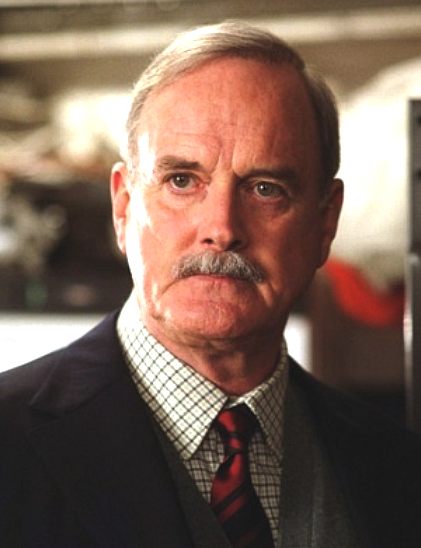
Cast
Daniel Craig as James Bond: A British agent who, after being assigned 00-status, is sent on a mission to arrest a bomb-maker in Madagascar, where he stumbles upon Le Chiffre's terrorist cell and is then sent to defeat him in a high-stakes poker game at Casino Royale.
Eva Green as Vesper Lynd: An agent for HM Treasury assigned to supervise Bond and finance his poker table exploits.
Mads Mikkelsen as Le Chiffre: The main villain and a damn good
foil. A banker who services many of the world's terrorists. He is a mathematical genius and expert chess player and uses these skills when playing poker.
Judi Dench as M: The head of MI6. Though she feels she has promoted Bond too soon and chides him for his rash actions, she acts as an important maternal figure in his life. Dench was the only cast member carried through from the Brosnan
films and thank goodness she was. She is magnificant.
Jeffrey Wright as Felix Leiter: A CIA operative participating in the poker tournament while assisting Bond. This is the first Eon-produced Bond film in which Leiter is played by a black actor. (The only other black actor to portray Leiter was Bernie Casey in Never Say Never Again, which was not produced by Eon.)
Giancarlo Giannini as René Mathis: Bond's contact in Montenegro.
Simon Abkarian as Alex Dimitrios: Another contractor in the international terrorist underworld and associate of Le Chiffre, based in the Bahamas.
Caterina Murino as Solange Dimitrios: Dimitrios' wife, whom Bond seduces. She is killed by Le Chiffre for unintentionally revealing one of his plans to Bond. The character name Solange originates from two Ian Fleming short stories: "From a View to a Kill" and "007 in New York".
Ivana Miličević as Valenka: Le Chiffre's girlfriend.
Isaac de Bankolé as Steven Obanno: A fearsome leader of the Lord's Resistance Army, introduced to Le Chiffre by Mr. White to account his finances.
Jesper Christensen as Mr. White: A mysterious liaison for an unnamed terrorist organisation.
Sébastien Foucan as Mollaka: A bomb-maker pursued by Bond through a construction site in Madagascar.
Tobias Menzies as Villiers: M's young secretary at MI6 Headquarters.
Ludger Pistor as Mendel: A Swiss banker responsible for all monetary transactions during and after the poker tournament.
Claudio Santamaria as Carlos: A terrorist employed by Le Chiffre to blow up an aircraft.
Richard Sammel as Gettler: An assassin who works for an unnamed terrorist organisation and contacts Vesper in Venice.
Clemens Schick as Kratt: Le Chiffre's bodyguard, who often accompanies his boss wherever he travels
Joseph Millson as Carter: An MI6 agent who accompanies Bond in Madagascar.
Ben Cooke as Williams: An MI6 agent who debriefs Bond in London.
Darwin Shawh as Fisher: Dryden's underground contact. M sends Bond to kill him, his first official target. Bond tracks him down, nearly drowns him, and then shoots him dead.
Diane Hartford as Card Player.
Casino Royale includes a cameo by British entrepreneur Richard Branson (seen being frisked at Miami airport). The cameo was cut out of the in-flight versions shown on British Airways' in-flight entertainment systems, as was a shot of the Virgin Atlantic aircraft Branson
supplied.
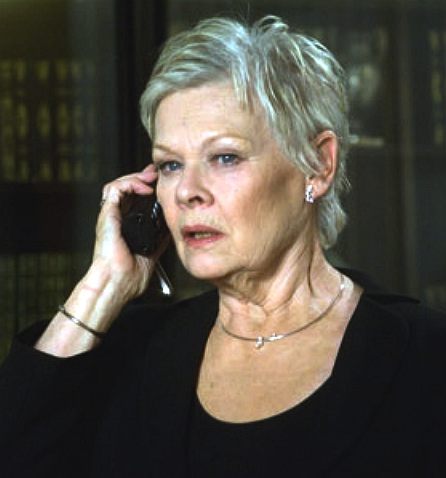
Production
Eon Productions gained the rights for Casino Royale in 1999 after Sony Pictures Entertainment exchanged them for MGM's rights to
Spider-Man. In March 2004, Neal Purvis and Robert Wade began writing a screenplay for Pierce Brosnan as Bond, aiming to bring back the flavour of Ian Fleming's original Bond
novels. Paul Haggis' main contribution was to rewrite the climax of the film. He explained, "the draft that was there was very faithful to the book and there was a confession, so in the original draft the character confessed and killed herself. She then sent Bond to chase after the villains; Bond chased the villains into the house. I don't know why but I thought that Vesper had to be in the sinking house and Bond has to want to kill her and then try and save
her."
Director Quentin Tarantino expressed interest in directing an adaptation of Casino
Royale, although he did not follow this up with Eon. Tarantino also expressed interest in Casino Royale after Pulp Fiction. He claims to have worked behind the scenes with the Fleming family, and believed this was the reason why filmmakers finally went ahead with Casino
Royale. Tarantino also said, he would have set it in the 1950s, like the novel, would have filmed it in black-and-white and would have only made it with Pierce Brosnan as Bond. In February 2005, Martin Campbell was announced as the film's
director. Later in 2005, Sony led a consortium that purchased MGM, allowing Sony to gain distribution rights starting with the
film.
Eon admitted that they had relied too heavily on CGI effects in the more recent films, particularly Die Another Day, and were keen to accomplish the stunts in Casino Royale "the old fashioned
way". In keeping with this drive for more realism, screenwriters Purvis, Wade and Haggis wanted the script to follow as closely as possible to the original 1953 novel, keeping Fleming's darker storyline and characterisation of
Bond.
Casino Royale became the first Bond film to take its title from a Fleming novel or short story since 1987's The Living Daylights. It is also the first Bond film since then not to be adapted as a novelisation. Instead, a film tie-in edition of Fleming's original novel was
published.
Casting
Pierce Brosnan had originally signed a deal for four films when he was cast in the role of James Bond. This was fulfilled with the production of Die Another Day in 2002. However, at this stage Brosnan was approaching his 50th birthday, and speculation began that the producers were seeking to replace him with a younger
actor. Brosnan officially announced he was stepping down in February 2005. At one point producer Michael G. Wilson claimed there was a list of over 200 names being considered for his
replacement. Croatian actor Goran Višnjić auditioned for the role the same day as Craig, but was reportedly unable to master a British
accent. According to Martin Campbell, Henry Cavill was the only actor in serious contention for the role, but at 22 years old, was considered too
young. Sam Worthington was also considered.
In May 2005, Daniel Craig announced that MGM and producers Michael G. Wilson and Barbara Broccoli had assured him that he would get the role of Bond, and Matthew Vaughn told reporters that MGM offered him the opportunity to direct, but Eon Productions at that point had not approached either of
them. A year beforehand, Craig rejected the offer, as he felt the series had descended into formula: only when he read the script did he become interested. Craig read all of Fleming's novels to prepare for the part, and cited Mossad and British Secret Service agents who served as advisors on the set of Munich as inspiring because, "Bond has just come out of the service and he's a killer.
You can see it in their eyes, you know immediately: oh, hello, he's a killer. There's a look. These guys walk into a room and very subtly they check the perimeters for an exit. That's the sort of thing I
wanted."
On 14 October 2005, Eon Productions, Sony Pictures Entertainment and MGM announced at a press conference in London that Craig would be the sixth actor to portray James
Bond. A tuxedo-clad Craig arrived via a Royal Navy speedboat. Significant controversy followed the decision, with some critics and fans expressing doubt the producers had made the right choice. Throughout the entire production period, Internet campaigns such as danielcraigisnotbond.com expressed their dissatisfaction and threatened to boycott the film in
protest. Craig, unlike previous actors, was not considered by the protesters to fit the tall, dark, handsome and charismatic image of Bond to which viewers had been
accustomed. The Daily Mirror ran a front page news story critical of Craig, with the headline, The Name's Bland – James
Bland.
The next important casting was that of the lead Bond girl, Vesper
Lynd. Casting director Debbie McWilliams acknowledged that Hollywood actresses Angelina Jolie and Charlize Theron were "strongly considered" for the role and that Belgian actress Cécile de France had also auditioned, but her English accent "wasn't up to
scratch." Audrey Tautou was also considered, but not chosen because of her role in The Da Vinci Code that was released in May
2006. It was announced on 16 February 2006 that Eva Green would play the
part.
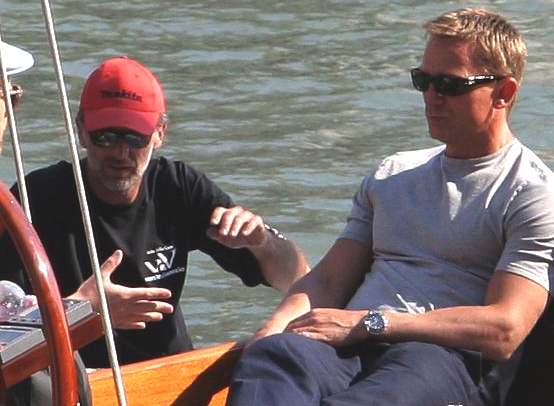
Daniel
Craig in Venice during filming
Filming
Principal photography for Casino Royale commenced on 30 January 2006 and concluded on 21 July 2006. The film was primarily shot at Barrandov Studios in Prague, with additional location shooting in the Bahamas, Italy and the United Kingdom. The shoot concluded at Pinewood
Studios.
Initially, Michael G. Wilson confirmed that Casino Royale would either be filmed or take place in Prague and South Africa. However, Eon Productions encountered problems in securing film locations in South
Africa. After no other locations became available, the producers had to reconsider their options. In September 2005, Martin Campbell and director of photography Phil Meheux were scouting Paradise Island in the Bahamas as a possible location for the
film. On 6 October 2005, Martin Campbell confirmed that Casino Royale would film in the Bahamas and "maybe Italy". In addition to the extensive location filming, studio work including choreography and stunt coordination practice was performed at the Barrandov Studios in Prague and at Pinewood Studios where the film used several stages as well as the paddock tank and the historic 007 Stage. Further shooting in the UK was scheduled for Dunsfold Aerodrome in Surrey, the cricket pavilion at Eton College (although that particular scene was cut from the completed movie) and the Millbrook Vehicle Proving Ground in
Bedfordshire.
After Prague, the production moved to the Bahamas. Several locations around New Providence were used for filming during February and March, particularly on Paradise Island. Footage set in Mbale, Uganda, was filmed at Black Park, a Country Park in Buckinghamshire, on 4 July 2006. Additional scenes took place at Albany House, an estate owned by golfers Ernie Els and Tiger
Woods. The crew returned to the Czech Republic in April, and continued there, filming in Prague, Planá and Loket, before completing in the town of Karlovy Vary in May. A famous Czech spa, Karlovy Vary, in German known as the Karlsbad, was used as the exterior of the Casino Royale, with the Grandhotel Pupp serving as "Hotel
Splendide". The main Italian location was Venice, where the majority of the film's ending is set. Other scenes in the latter half of the film were shot in late May and early June at the Villa del Balbianello on the shores of Lake
Como. Further exterior shooting for the movie took place at properties such as the Villa la Gaeta, near the lakeside town of
Menaggio.
A recreation of the Body Worlds exhibit provided a setting for one scene in the film. Among the Body Worlds plastinates featured in that scene were the Poker Playing Trio (which plays a key role in one scene) and Rearing Horse and Rider. The exhibition's developer and promoter, German anatomist Gunther von Hagens, also has a cameo appearance in the
film, although only his trademark hat is actually visible on screen.
On 30 July 2006, a fire broke out at the 007 Stage. The damage was significant, but had no effect on the release of Casino Royale as the incident occurred one week after filming had been completed, and the sets were in the process of being
dismantled. On 11 August 2006, Pinewood Studios confirmed that no attempt would be made to salvage the remains of the
stage; instead it would be rebuilt from scratch.
Effects
In designing the credit sequence for the film, graphic designer Daniel Kleinman was inspired by the cover of the 1953 British first edition of Casino
Royale, which featured Ian Fleming's original design of a playing card bordered by eight red hearts dripping with blood. Kleinman said, "The hearts not only represent cards but the tribulations of Bond's love story. So I took that as inspiration to use playing card graphics in different ways in the titles," like a club representing a puff of gun smoke, and slashed arteries spurting thousands of tiny
hearts. In creating the shadow images of the sequence, Kleinman digitised the footage of Craig and the film's stuntmen on the Inferno visual effects system, at Framestore CFC in London; the actors' silhouettes were incorporated into more than 20 digitally animated scenes depicting intricate and innovative card patterns. Kleinman decided not to use the female silhouettes commonly seen throughout the Bond title sequences, considering that the women did not fit with both the film's spirit and the storyline following Bond falling in
love.
For the rest of the film, Special Effects and Miniature Effects Supervisor Chris Corbould returned to a more realistic style of film making and significantly reduced digital effects. According to
Corbould, "CGI is a great tool and can be very useful, but I will fight to the tooth and nail to do something for real. It’s the best way to
go". Three scenes involving primarily physical effects in the film were the chase at a building site in Madagascar, the Miami Airport chase sequence, and the sinking Venetian house, with sets located on the Grand Canal and in Pinewood
Studios.
First on the schedule were the scenes on the Madagascar building site, shot in the Bahamas on the site of a derelict hotel which Michael G. Wilson had become acquainted with in 1977 during the filming of The Spy Who Loved
Me. In the scene, Bond drives a digger toward the building, slamming into the concrete plinth on which Mollaka is running. The stunt team built a model and put forward several ways in which the digger could conceivably take out the concrete, including taking out the pillar underneath. A section of the concrete wall was removed to fit the digger, and reinforced with
steel.
The sequence at Miami International Airport was partly shot at the Dunsfold Aerodrome, in Surrey, which is known from British car show Top Gear, with some footage from the Prague and Miami
airports. In filming the scene in which the engine thrust of the moving aircraft blows the police car high into the air, second unit directors Ian Lowe, Terry Madden and Alex Witt used a crane with a strong lead cable attached to the rear bumper of the vehicle to move it up and backwards at the moment of full extension away from the
plane.
The Skyfleet S570 aircraft in the film was an ex-British Airways 747-200B
G-BDXJ which had its engines removed and was modified for its appearance in the film. The modified aircraft had the outboard engines replaced by external fuel tanks, while the inboard engines were replaced by a mock-up pair of engines on each inboard pylon. The cockpit profile was altered to make the 747 look like a prototype of an advanced
airliner. The plane used can be seen on the BBC motoring programme Top Gear on the Test Track.
The sinking of the Venetian house at the climax of the film featured the largest rig ever built for a Bond
film. For the scene involving Bond following Vesper into the house undergoing renovation supported by inflatable balloons, a tank was constructed at the 007 stage at Pinewood, consisting of a Venetian piazza and the interior of the three-story dilapidated house. The rig, weighing some 90 tons, incorporated electronics with hydraulic valves which were closely controlled by computer because of the dynamic movement within the system on its two axes. The same computer system also controlled the exterior model which the effects team built to one-third scale to film the building eventually collapsing into the Venetian canal. The model elevator within the rig could be immersed in 19 feet (5.8 m) of water, and used banks of compressors to strictly regulate
movement.
At the time of filming, Aston Martin were still in the final phases of designing the DBS. The scene involving the car crash was devised using an Aston Martin DB9 that was especially modified to look like Bond's Aston Martin DBS V12 and reinforced to withstand the impact. Due to the low centre of gravity of the vehicle, an 18-inch (450 mm) ramp had to be implemented on the road tarmac at Millbrook Proving Grounds and Ben Collins, the stunt driver who performed the
stunt, had to use an air cannon located behind the driver's seat to propel the car into a roll at the precise moment of impact. At a speed exceeding 70 mph (113 km/h), the car rotated seven times while being filmed, and was confirmed by the Guinness Book of Records on 5 November 2006 as a new world
record.
Music
The soundtrack of Casino Royale, released by Sony Classical on 14 November 2006, featured music composed by veteran composer David Arnold, his fourth soundtrack for the Bond film series, while Nicholas Dodd orchestrated and conducted the score. Producers Michael G. Wilson and Barbara Broccoli announced on 26 July 2006 that Chris Cornell, the former lead singer for Soundgarden and Audioslave, composed and performed the title song, "You Know My
Name". The song's main notes are played throughout the film as a substitute for the James Bond theme, to represent Bond's youth and inexperience. The classic theme only plays during the end credits to signal the climax of his character
arc.
Release
Casino Royale premiered at the Odeon Leicester Square, the Odeon West End and the Empire simultaneously in London on 14 November 2006. It marked the 60th Royal Film Performance and benefited the Cinema & Television Benevolent Fund (CTBF), whose patron, Queen Elizabeth II, was in attendance with the Duke of Edinburgh. It is the third James Bond premiere that the Queen attended following You Only Live Twice and Die Another
Day. Along with the cast and crew, numerous celebrities and 5,000 paying guests were also in attendance with half the proceeds benefiting the
CTBF.
Film Piracy
Only two days following the premiere, pirated copies appeared for sale in London. "The rapid appearance of this film on the streets shows the sophistication and organisation behind film piracy in the UK," said Kieron Sharp, from the Federation Against Copyright
Theft. Pirated copies of the DVD were selling for less than £1.57. Craig himself was offered such a DVD while walking anonymously through the streets of Beijing wearing a hat and glasses in order to avoid being
identified.
Enter
the Dragon
In January 2007, Casino Royale became the first Bond film ever to be shown in mainland Chinese cinemas. The Chinese version was edited before release, with the reference to the Cold War re-dubbed and new dialogue added during the poker scene explaining the process of Texas Hold'em, as the game is less familiar in China (this addition is reminiscent of dialogue that was added to the 1954 American TV adaptation in order to explain the rules of baccarat, the game featured in the original book). Casino Royale earned approximately $11.7 million in China since its opening on 30 January on 468
screens, including a record opening weekend collection for a non-Chinese film, with $1.5
million.
Product
Placement
After critics dubbed Die Another Day "Buy Another Day" because of around 20 product placement deals, Eon limited their promotions for Casino Royale. Partners included Ford Motors, Heineken Pilsener (which Eva Green starred in adverts for), Smirnoff, Omega SA, Virgin Atlantic Airways and Sony
Ericsson.
Box
office
The film earned $167,445,960 in the USA and Canada and $426,793,106 in other territories for a worldwide total of $594,239,066. Casino Royale was the 4th highest-grossing film of 2006, and is the highest-grossing
installment of the James Bond series.
United Kingdom and Ireland
Upon its release in the United Kingdom, Casino Royale broke franchise records on both opening
day - £1.7 million - and opening weekend - £13,370,969. At the end of its box office run, the film had grossed £55.4 million, making it the most successful film of the year in the
UK, and as of 2011, the tenth highest-grossing film of all time in the
country.
United States and Canada
On its opening day Casino Royale was on top with $14,741,135, and throughout the weekend grossed a total of $40,833,156, placing it second in the ranking behind Happy Feet ($41.5
million). However, Casino Royale was playing in 370 less cinemas and had a better average ($11,890 per cinema, against $10,918 for Happy
Feet). It earned $167,445,960 by the end of its run in North
America, marking what was at the time the highest grossing film of the series, before being surpassed by Quantum of Solace's $168.4
million.
Other markets
On 18 November 2006, Casino Royale opened at the first position in 27 countries, with a weekend gross of $43,407,886 in the non-US / Canada / UK & Irish
markets. The film held the opening weekend record in India, taking in over $3,386,987, which was the highest for a foreign language film at the
time. The film retained the top spot at the worldwide box office for four
weeks.
Home
media
Casino Royale was simultaneously released on DVD, UMD and Blu-ray Disc on 16 March
2007. In the UK, Casino Royale was released on 16 March 2007 on DVD and
Blu-ray Disc. The DVD and Blu-ray Disc releases broke sales records: the Region 1 Blu-ray Disc edition became the highest selling high-definition title to date, selling more than 100,000 copies since its
release. The region 2 DVD edition achieved the record of fastest selling title for its first-week release. The UK DVD has continued to sell well, with 1,622,852 copies sold since 19
March. A copy of the Blu-ray Disc edition of Casino Royale was given out to the first 500,000 PAL PlayStation 3 owners who signed up to the PlayStation
Network. The DVD release includes the official music video for the film, and three documentaries detailing how Daniel Craig was chosen for the role of Bond, the filming, and an expanded version of the Bond Girls Are Forever documentary incorporating new interviews with Casino Royale cast members.
A three-disc edition of Casino Royale on DVD was released in the United Kingdom on 31 October 2008, coinciding with the cinema release of the sequel, Quantum of Solace (the following week in the United States). As well as features present from the 2007 release, the collector's edition contains an audio commentary, deleted scenes, featurettes and a storyboard-to-film
comparison. A two-disc Blu-ray version also followed in late 2008, featuring additional supplementary materials, enhanced interactivity through BD-Live, and the previous version's 5.1 PCM soundtrack was replaced with a similar 5.1 Dolby
True HD soundtrack.
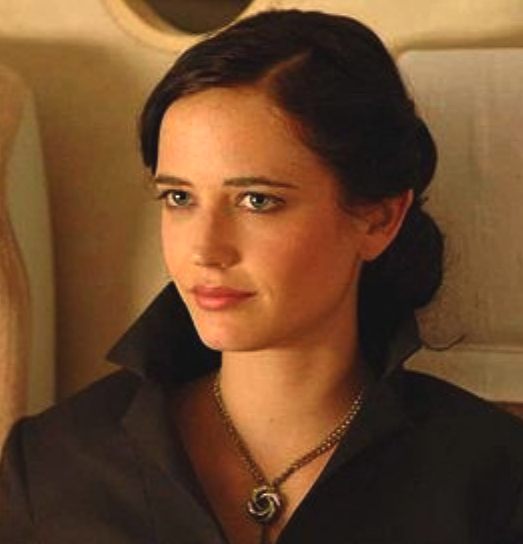
Reception/Reviews
Critics gave the film a positive response, in particular Craig's performance and credibility. During production this had been subject to debate by the media and the public, as Craig did not appear to fit Ian Fleming's original portrait of the character as tall, dark and suave. The Daily Telegraph compared the quality of Craig's characterisation of Bond to Sean Connery's and praised the script as smartly written, noting how the film departed from the series' conventions. The Times compared Craig's portrayal of the character to that of Timothy Dalton, and praised the action as
"edgy", with another reviewer citing in particular the action sequence involving the cranes in
Madagascar. Critics Paul Arendt of BBC Films, Kim Newman of Empire and Todd McCarthy of
Variety all described Craig as the first actor to truly embody Ian Fleming's James Bond from the original novel: ironic, brutal and cold.
The film was similarly well received in North America. MSNBC gave the movie a perfect 5 star
rating. The film was described as taking James Bond "back to his roots", similar to From Russia with
Love, where the focus was on character and plot rather than the high-tech gadgets and visual effects that were strongly criticised in Die Another
Day. Rotten Tomatoes gave the movie an aggregate rating of 94%, the highest rating for a wide-release of the year. It is the fourth-highest rating for a Bond film on the site behind Goldfinger which received a 96%, From Russia with Love which received a
96%, and Dr. No, with a 98% score. Metacritic gave the movie a Metascore of 81, signifying "Universal
Acclaim."
Entertainment Weekly named the film as the fifth best of the
series, and chose Vesper Lynd as the fourth best Bond girl in the
series. Some newspaper columnists and critics were impressed enough by Craig's performance to consider him a viable candidate for an Academy Award
nomination. Roger Ebert gave the film a four out of four star rating, the first for any of the James Bond films he reviewed. Ebert wrote that "Craig makes a superb Bond...who gives the sense of a hard man, wounded by life and his job, who nevertheless cares about people and right and wrong," and that the film "has the answers to all my complaints about the 45-year-old James Bond series," specifically "why nobody in a Bond movie ever seems to have any real
emotions."
Vicky Allan of the Sunday Herald noted Bond himself, and not his love interests, was sexually objectified in this film. A moment where he rises from the sea is reminiscent of Ursula Andress in Dr. No; he feels "skewered" by Vesper Lynd's criticism of him; "and though it would be almost unthinkable now have a female character in a mainstream film stripped naked and threatened with genital mutilation, that is exactly what happens to Bond in [the film]." So although the film backed off from past criticism of Bond girls being sex objects, "the once invincible James Bond becomes just another joint at the meat
market." This sentiment is shared by the University of Leicester's James Chapman, author of License to Thrill, who also notes Craig's Bond is "not yet the polished article"; he felt his incarnation of Bond is close to Fleming's because he is
"humourless," but is also different because "Fleming's Bond did not enjoy killing; Craig's Bond seems almost to relish
it."
Roger Moore wrote, "Daniel Craig impressed me so greatly in his debut outing, Casino
Royale, by introducing a more gritty, unrefined edge to the character that I thought Sean might just have to move over. Craig’s interpretation was like nothing we’d seen on screen before; Jimmy Bond was earning his stripes and making mistakes. It was intriguing to see him being castigated by M, just like a naughty schoolboy would be by his headmaster. The script showed him as a vulnerable, troubled and flawed character. Quite the opposite to my Bond! Craig was, and is, very much the Bond Ian Fleming had described in the books – a ruthless killing machine. It was a Bond that the public wanted." So impressed was Moore that he chose to buy the
DVD. Raymond Benson, the author of nine Bond novels, called Casino Royale "a perfect Bond
film."
However, the film met with mixed reactions from other critics. Rob Gonsalves of eFilmCritic.com gave the film a positive review, but commented, "When you strip the 007 films down for action and 'realism,' you lose the soul of those old beloved Bond movies – they might as well be Jason Bourne
movies." John Beifuss of The Commercial Appeal said, "Who wants to see Bond learn a lesson about ego, as if he were Greg Brady in his 'Johnny Bravo'
phase?" Anthony Lane of The New Yorker criticised the more imperfect and self-aware depiction of the character, saying, "Even James Bond, in other words, wants to be
007."
Though American radio personality Michael Medved gave the film three stars out of four, describing it as "intriguing, audacious and very original... more believable and less
cartoonish, than previous 007 extravaganzas," he commented that the "sometimes sluggish pacing will frustrate some Bond
fanatics." Similarly, a reviewer for The Sun praised the film for its darkness and Craig's performance, but felt that "like the novel, it suffers from a lack of sharpness in the plot" and believed that it required additional editing, particularly the
finale. Commentators such as Emanuel Levy concurred, feeling the ending was too long, and that the film's terrorist villains lacked depth, although he praised Craig and gave the film a B+
overall. Other reviewers responded negatively, including Tim Adams of The Observer who felt the film came off uncomfortably in an attempt to make the series
grittier.
The sequence with Craig sporting swimming trunks topped the sexiest male celebrity poll of The
Sun, and in 2009 Del Monte Foods launched an ice lolly moulded to resemble Craig emerging from the
sea. In 2008, Entertainment Weekly named it the 19th best film of the past 25
years.
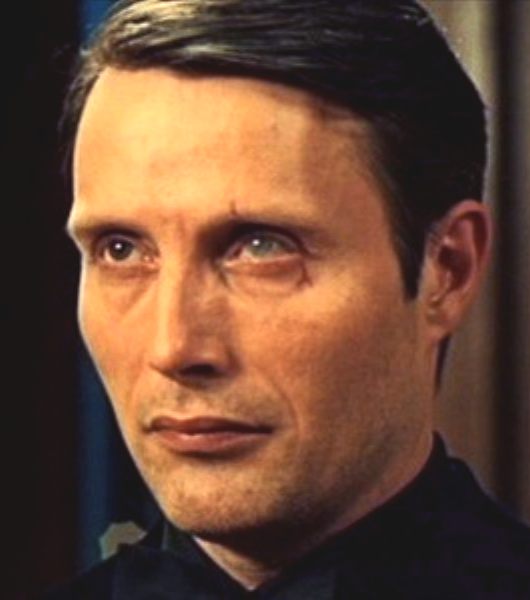
Top Ten
Lists
The film appeared on many critics' top ten lists of the best films of
2006.
1st – Owen Gleiberman, Entertainment Weekly
3rd – Empire
3rd – Marc Moha, The Oregonian
3rd – Stephanie Zacharek, Salon.com
3rd – William Arnold, Seattle Post-Intelligencer
7th – Jack Mathews, New York Daily News
8th – James Berardinelli, ReelViews
8th – Desson Thomson, Washington Post
8th – Michael Phillips, Chicago Tribune
9th – Stephen Hunter, Washington Post
10th – Michael Wilmington, Chicago Tribune
10th – Mike Russell, The Oregonian
Accolades
At the 2006 British Academy of Film and Television Arts Awards, Casino Royale won the Film Award for Best Sound (Chris Munro, Eddy Joseph, Mike Prestwood Smith, Martin Cantwell, Mark Taylor), and the Orange Rising Star Award, which was won by Eva
Green. The film was nominated for eight BAFTA awards, including the Alexander Korda Award for Best British Film of the Year; Best Screenplay (Neal Purvis, Robert Wade, Paul Haggis); the Anthony Asquith Award for Best Film Music (David Arnold); Best Cinematography (Phil
Meheux); Best Editing (Stuart Baird); Best Production Design (Peter Lamont, Simon Wakefield); Best Achievement in Special Visual Effects (Steve
Begg, Chris Corbould, John Paul Docherty, Ditch Doy); and Best Actor (Daniel Craig). This made Craig the first actor ever to receive a BAFTA nomination for a performance as James
Bond. He also received the Evening Standard British Film Award for Best
Actor. There is no doubting his acting ability.
Casino Royale won the Excellence in Production Design Award from the Art Directors
Guild, and singer Chris Cornell's "You Know My Name" won the International Press Academy Satellite Award for Best Original
Song. The film was nominated for five Saturn Awards— Best Action/Adventure/Thriller Film, Best Actor (Daniel Craig), Best Supporting Actress (Eva Green), Best Writing (Purvis, Wade and Haggis) and Best Music (David
Arnold). The 2006 Golden Tomato Awards named Casino Royale the Wide Release Film of the
Year.Casino Royale was also nominated for, and has won, many other international awards for its
screenplay, film editing, visual effects, and production design. At the 2007 Saturn Awards, the film was declared to be the Best Action/Adventure/Thriller film of
2006. Several members of the crew were also recipients of 2007 Taurus World Stunt Awards, including Gary Powell for Best Stunt Coordination and Ben Cooke, Kai Martin, Marvin Stewart-Campbell and Adam Kirley for Best High
Work.
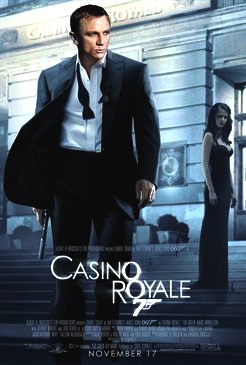
Casino
Royale film poster
LINKS
|
Train
Journey - Youtube
|
3
- Youtube
|
|
St - Youtube
|
Poison - Youtube
|
LINKS:

A
taste for adventure
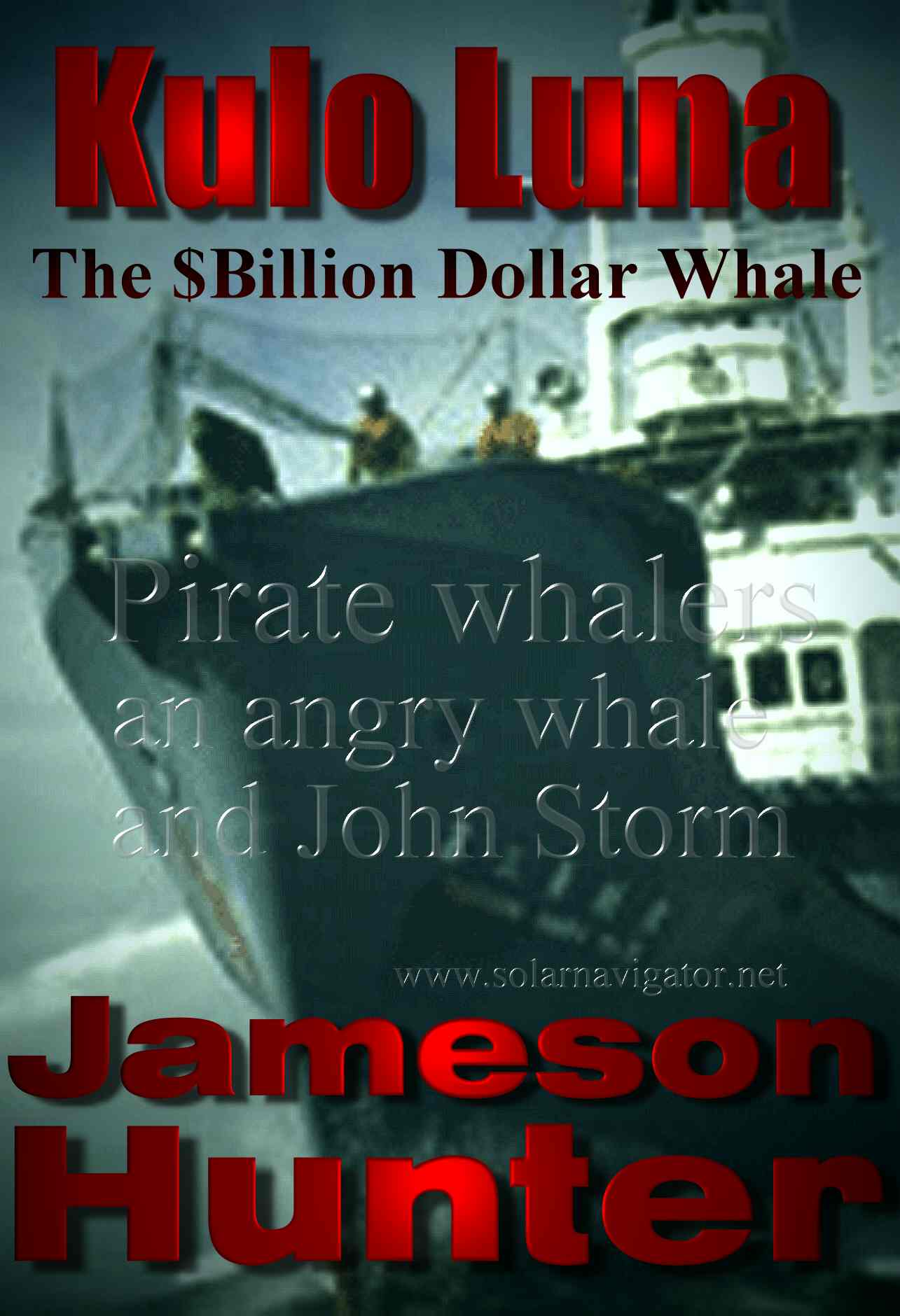
A
heartwarming adventure: pirate
whalers V conservationists
|






